Guitar lesson: 5 ways to break out of the minor pentatonic scale
Simple tips for moving beyond staple guitar shapes
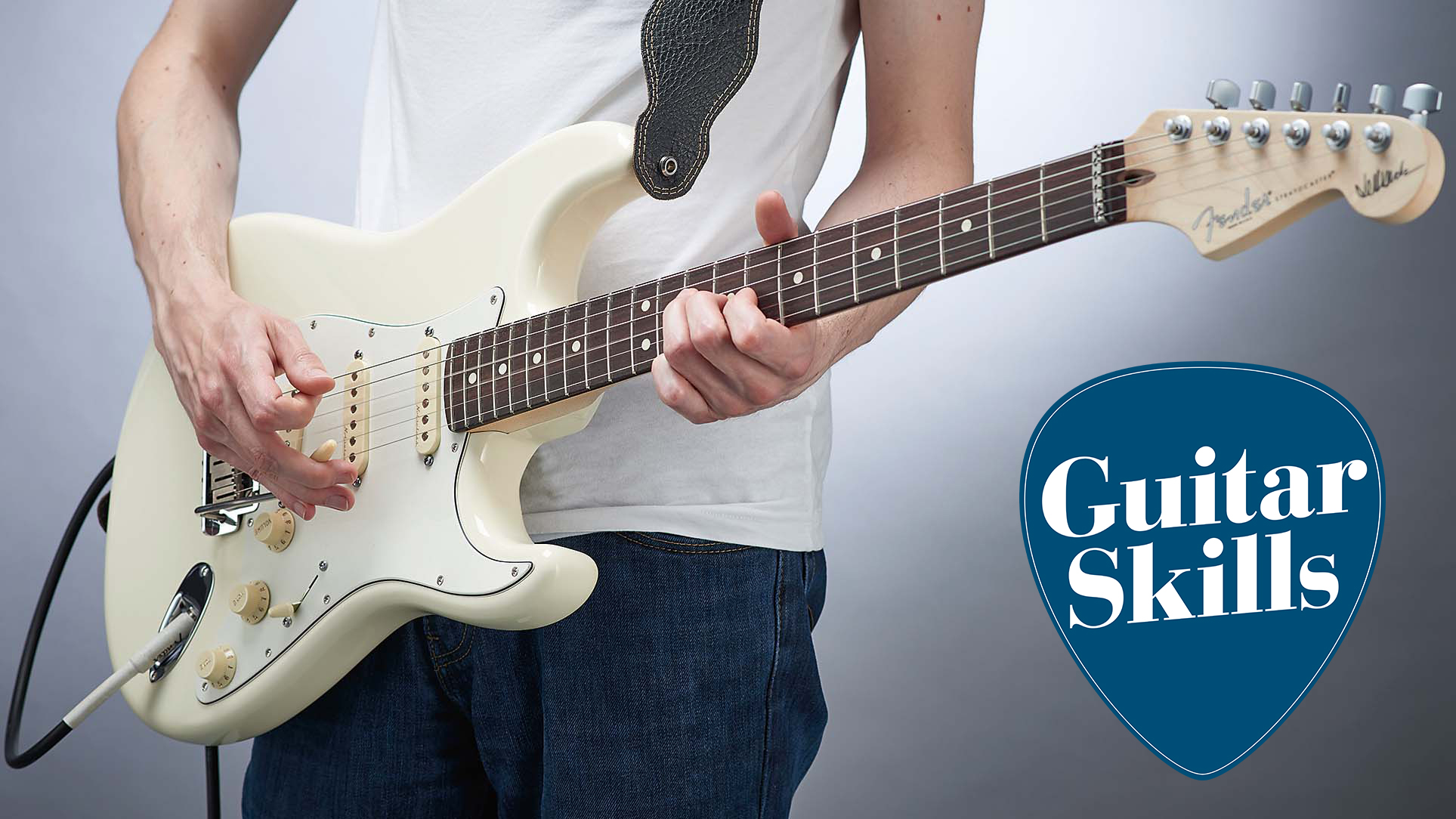
Guitar skills: We’re always harping on about the minor pentatonic scale. This essential scale is the most frequently used set of notes in rock, blues, country, metal, funk and even jazz lead guitar. Learn a few minor pentatonic scale shapes and you’ll be taking a big step towards mastering your instrument.
Playing a few choice notes from outside of the scale can also transform your solos. Experienced players may know which scales these ‘outside’ notes come from, but it’s not essential knowledge.
In this lesson, we’re treating the minor pentatonic scale as a framework for a handful of licks, but look out as we target a few tasty non-pentatonic notes.
The A minor pentatonic scale
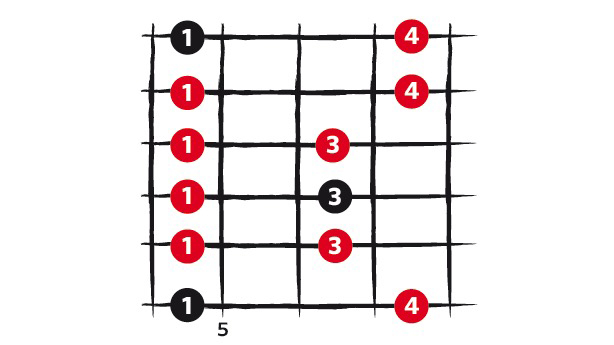
Minor pentatonic scale with extra notes
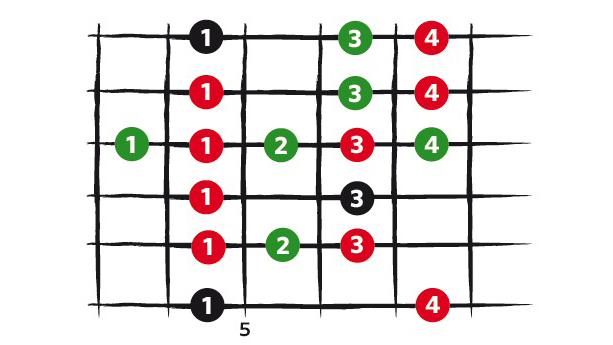
Advanced Scales
This tutorial's ‘outside’ notes are taken from these advanced scales, and more experienced players may prefer to learn the shapes in full.
If this feels like homework then skip this info and move on to jam with our tabbed licks over the page.
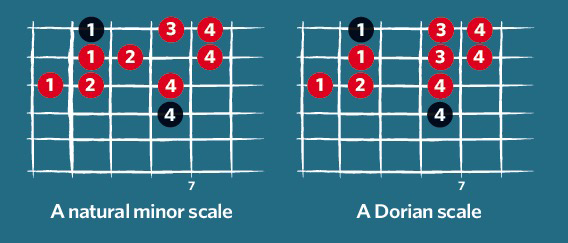
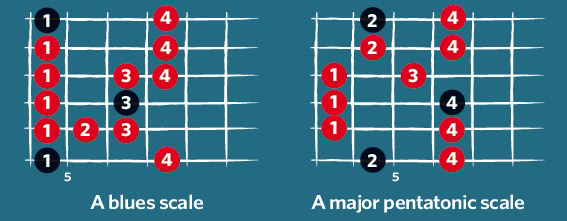
1. Setting The Mark
Minor pentatonic and natural minor scales
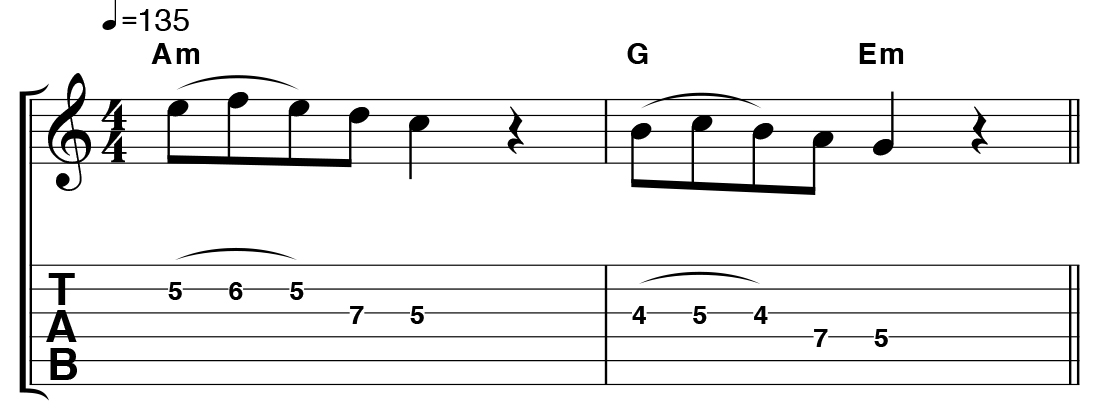
Start by taking a look at the tab and plotting out all the 5th and 7th fret notes in our Mark Knopfler-inspired rock lick – these notes are taken from the minor pentatonic scale.
Get the MusicRadar Newsletter
Want all the hottest music and gear news, reviews, deals, features and more, direct to your inbox? Sign up here.
The 6th and 4th fret notes come from the natural minor scale and you’ll need to reposition your fingers to hit these cleanly.
For a classic Knopfler sound, we’ve opted to use a Fender Stratocaster with its selector switch set to position two for a blend of the bridge and middle single-coil pickups.
2. Putting The Fun In Funk
Minor pentatonic and Dorian scales
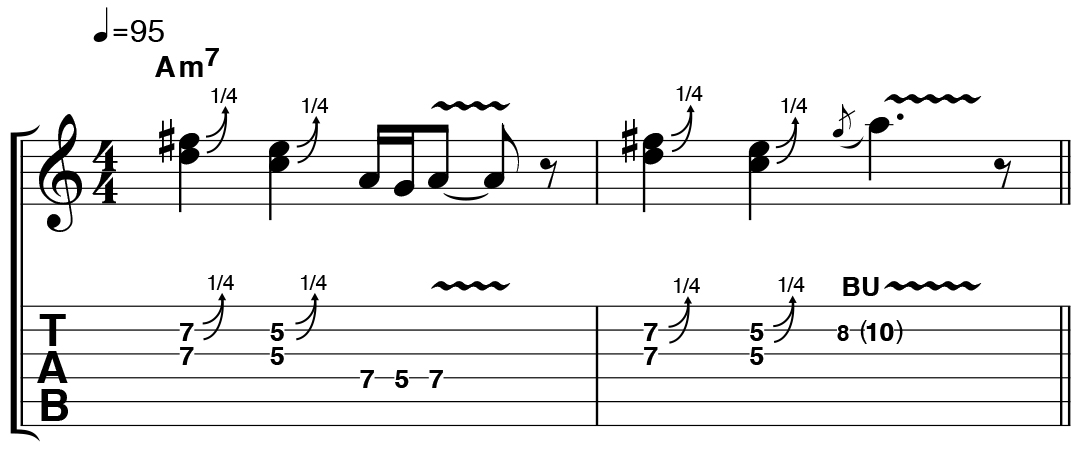
Inspired by legendary P-Funk guitarist Eddie Hazel, we’re playing over a funk-style backing here and targeting an F# note on the 7th fret of the second string (taken from the A Dorian scale).
You have to bend two strings at the same time here, which needs a bit of strength, but don’t worry too much about accuracy. These are ‘quarter-tone’ bends, so you don’t bend up to an exact note – it’s more of a feel thing, drawing out the bends for fluid, vocal phrasing.
3. Blue Days
Minor pentatonic and blues scales
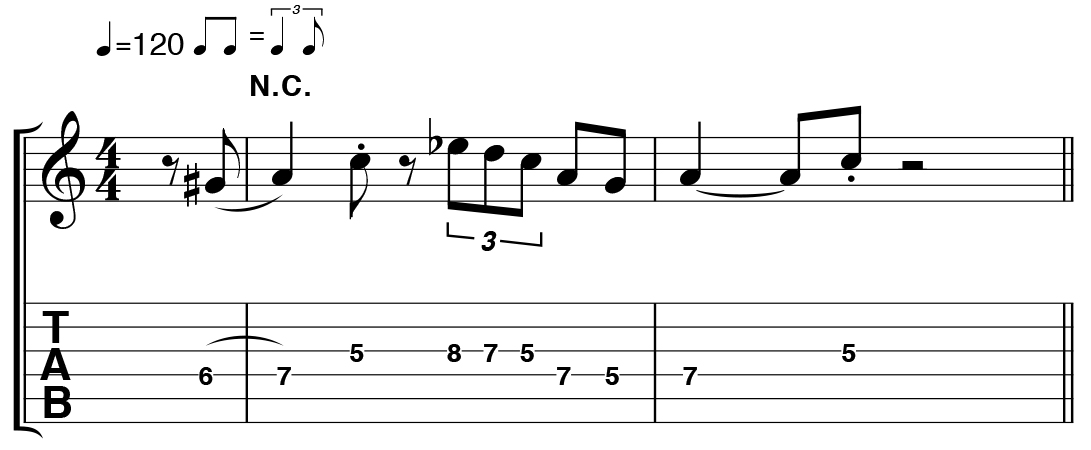
With the minor pentatonic scale at its core, this Kenny Burrell-style jazz-blues lick is simple. Just watch out for those notes from outside of the scale.
Right away, with the first two notes, we’re using a staple jazz trick and sliding into a scale note from a semitone below. The minor pentatonic scale doesn’t have any one-fret steps so you’re guaranteed a more colourful sound.
We’re also using the A blues scale which simply adds an Eb note to the A minor pentatonic scale.
4. Country Living
Major pentatonic and blues scales
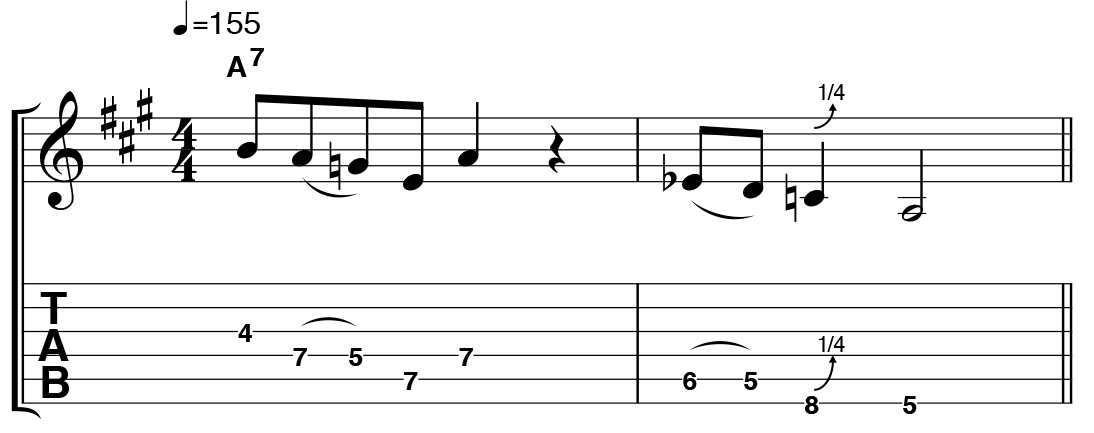
Many guitar styles are influenced by blues, and, here in our country style lick, we’re using that old blues idea of playing pentatonic scales over a 7th chord (A7).
Of course, we’re stepping outside of the minor pentatonic scale, too. The very first note in bar 1 is a B (suggesting the A major pentatonic scale), and the first note in bar 2 is an Eb (which appears in the A blues scale).
This kind of lick sounds great the faster you play it, so try to gradually build speed.
5. Blues Scale Blues
Major/minor pentatonic and blues scales

Here, we’re playing in a blues ballad style and our lick is a mix of minor and major pentatonics and the blues scale – a step up in complexity with more time spent outside the basic scale. The idea is to show you how far you can go, and still work in a minor pentatonic framework.
The lick in bar 3 is a challenge, but, like the minor pentatonic scale itself, it’s all based around the 5th to 8th frets, so assign each finger to each fret.
More guitar lessons
Total Guitar is Europe's best-selling guitar magazine.
Every month we feature interviews with the biggest names and hottest new acts in guitar land, plus Guest Lessons from the stars.
Finally, our Rocked & Rated section is the place to go for reviews, round-ups and help setting up your guitars and gear.
Subscribe: http://bit.ly/totalguitar










